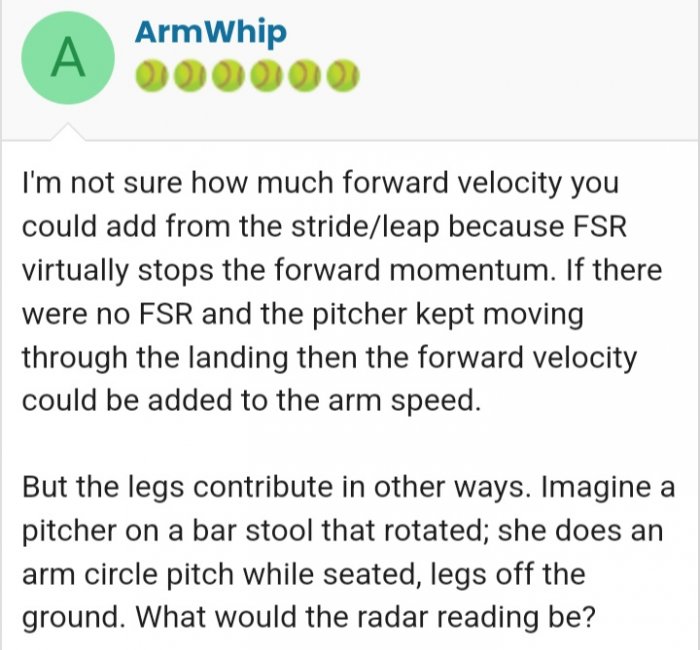I'm not sure how much forward velocity you could add from the stride/leap because FSR virtually stops the forward momentum. If there were no FSR and the pitcher kept moving through the landing then the forward velocity could be added to the arm speed.
But the legs contribute in other ways. Imagine a pitcher on a bar stool that rotated; she does an arm circle pitch while seated, legs off the ground. What would the radar reading be?
But the legs contribute in other ways. Imagine a pitcher on a bar stool that rotated; she does an arm circle pitch while seated, legs off the ground. What would the radar reading be?




